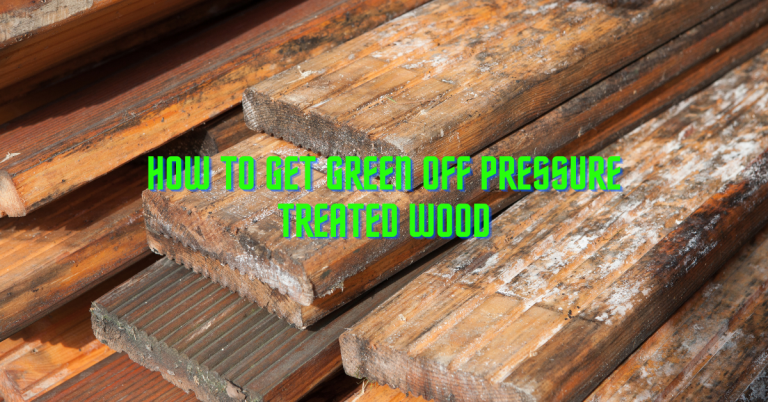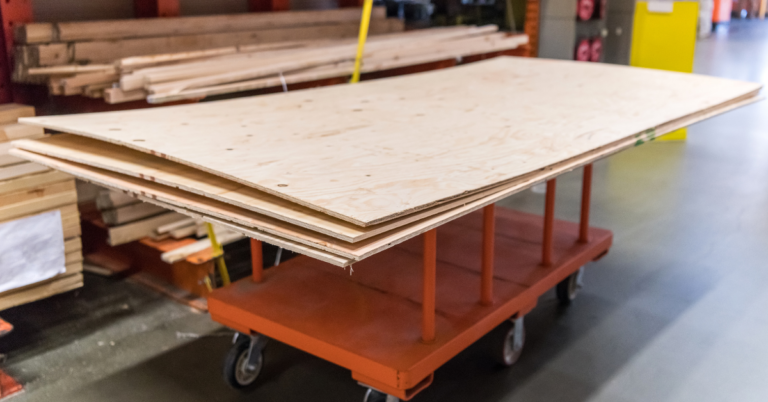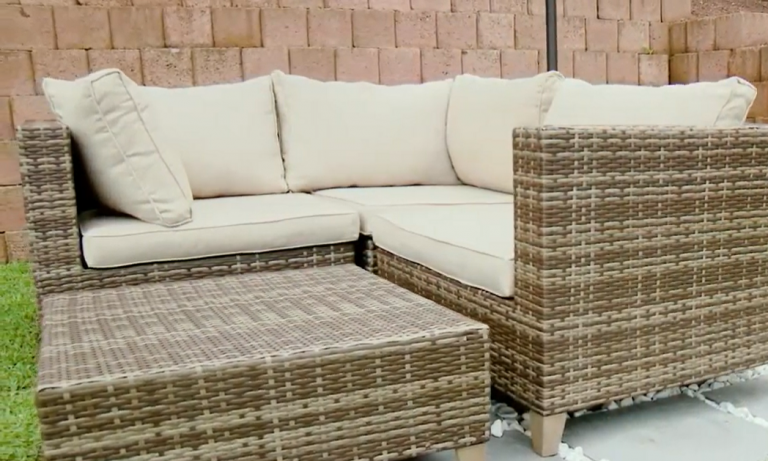Can you Use Non Pressure Treated Wood for a Deck?
Can you Use Non Pressure Treated Wood for a Deck? Non-pressure treated wood can be used for decking and various other furniture, but the only disadvantage is that it might not last long, and its lifespan might not go beyond 5 years.
Sealants, stains, and natural oils can waterproof the wood to protect it from moisture and make it more durable. If left unsealed, water would find its way into the wood, activate biological invasion, which eventually leads to wood decay.
To make the wood last longer and have it looking good as new, the wood is waterproofed, and the waterproofing agents such as lacquer, polyurethane, varnish, tung oil, linseed oil, and stain sealant work in such a way that they bind tightly to the wood to form a protective coat over the wood that resists moisture and excess sunlight.
All at a Glance
Factors that affect Non Pressure treated wood

Two major factors affect non-pressure treated wood, which is moisture and sunlight.
Moisture: Moisture is one the most critical factors that affect woods, either treated or not. Once moisture finds its way inside the wood, it initiates a fungal attack and bacterial invasion that eventually leads to wood rot. Moisture doesn’t affect pressure-treated woods, but it’s directly opposite with non-pressure-treated wood as they ultimately get affected unless they’re sealed and waterproofed.
Sunlight: Sunlight has a significant effect on both pressure and non-pressure-treated wood. On prolonged exposure, the sunlight dries out the wood, which makes it lose its color, glow and eventually causes it to warp, resulting in splits and cracks in the wood. Marine varnish helps to waterproof decks and also protect them from UV light.
How Long Can Non Pressure Treated Wood Last?
This is a frequently unasked question that needs an answer. The shelf life of nonpressure treated wood depends on how it is handled. For wooden decks, they can last up to 3-5 years, depending on proper maintenance.
If the deck is exposed to excess sunlight, water might start rotting within a short period. The climatic condition can also affect the wood, making it expand and contract, which eventually reduces the durability of the wood. The only thing that will protect and make your wood last longer than 4- 5 years is to waterproof and seal your wood.
We’ve outlined various methods to waterproof your wood which will protect and make your deck last longer.
Methods on how to waterproof and seal your wood

To duly protect your wood from moisture, excessive sunlight, and wood-infesting bacteria, it is advisable to waterproof your wood. There are various ways of protecting your wood, but we’ll discuss three methods which are;
- Use of either tung or linseed oil
- Use of polyurethane, varnish, or lacquer
- Use of stain-sealant
Each of these methods is effective for sealing your wood and also increased its durability.
1. Use of either tung or linseed oil
Over the years, tung and linseed oil has been used to make a hand-rubbed oil finish over wood surfaces.
Linseed oil is extracted from the seeds of a flax plant, while tung oil is of Chinese descent as it is gotten from the tung tree and primarily suitable for dark-grained woods. Although ordinary tung oil takes time to dry and has a tacky nature, it has recently been modified by mixing the oil with other materials that’ll hasten its curing time.
Step one: Clean your wood.
Before deciding to work on your deck, it’s essential to clean your wood by dusting the wood and making sure it’s free from all forms of dirt and grime. Then use fine-grit sandpaper to sand the wood gently and then clean once you’re done.
Step two: Get your mixed solution.
To mix your solution, get a bucket and then pour one part oil of either boiled linseed or tung oil. Add one part of mineral spirits and one part polyurethane and thoroughly mix it.
To get a thicker solution, reduce the number of mineral spirits in the solution, and perhaps you’re worried about the solution drying out before you’re done; not to worry, you can reduce the portion of polyurethane. On the other side, to speed up the drying time, add more polyurethane to the mixture.
To save yourself the stress, you can get the premixed solution of either tung or linseed oil.
Step three: Apply
Please make use of a natural bristle paintbrush to apply it over the surface of the wood lightly. Allow the oil to seep into the wood and apply more over the dry surfaces.
Get a clean rag and use it to wipe off excess oil from the wood.
Step four: Leave it to dry
Please leave it to dry totally, and this may take few hours, but it is more advisable to leave it overnight.
Step five: Sand
Using fine-grit sandpaper, lightly sand the deck’s surface, clean off the dust, reapply oil where necessary, and then leave to dry.
2. Use of polyurethane, varnish, or lacquer
Polyurethane, varnish, and lacquer are very efficient when it comes to waterproofing ability. They bond to the surface of the wood and eventually prevent water or moisture from seeping into the wood. You can choose any method of application, be it a brush or sprayer.
There are few things you need to know about each of the sealants you’re about to use. Lacquer is made up of solubilized tree resin in alcohol. It is most suitable for furniture and dark-grained woods because the coat gives a yellow coloration over time, which eventually discolors the wood.
Still, it is an effective sealant, and lacquer thinner reduces its thickness depending on your preference. When working with lacquer, multiple light coats is most preferable for the deck’s surface.
The varnish contains solvent, drying oil, and resin. It is best for outdoor furniture because it gives a thick coating that doesn’t turn yellow over time which means you can use it on dark and light-grained wood. It would help if you used marine varnish for woods intended for decking.
Lastly, polyurethane is made up of acrylic and polyurethane resins which don’t yellow over time after being applied on the surface of the wood. Regardless, you can choose any of the three sealants to waterproof and protect your deck. The following steps are well outlined to guide you on how to apply sealants rightly.
Step one: Clean your wood
Before deciding to work on your wood, it’s important to clean your wood by dusting the wood and making sure it’s free from all forms of dirt and grime. Then use fine-grit sandpaper to sand the wood gently and then clean once you’re done.
Step two: Apply
Before applying, be careful not to shake or abruptly stir the sealant as it’ll firm bubbles that might eventually settle on the coats even after it cures. Apply your desired coat on the surface of the wood, either using a brush or a sprayer. Make sure the coats are even.
Step three: Leave it to dry
Please leave it to dry totally, and this makes range from few minutes to hours but ensure the wood is in a well-ventilated area.
Step four: Resand and Recoat
Using fine-grit sandpaper, lightly sand the surface of the wood, clean off the dust and then reapply the sealant where necessary and then leave to dry.
3. Use of Stain-Sealant
High-quality stain sealant is suitable for wooden decks. It’s a dual-purpose sealant. Amazing right? Definitely yes! It waterproofs the surface of the wood and also gives color. I’m sure you’re wondering how that is; well, they contain chemical components such as color pigments, attachers which can either be oil, alkyd or water-based and will need to be reapplied every one or two years.
Step one: Clean your wood
Before deciding to work on your wood, it’s important to clean your wood by dusting the wood and making sure it’s free from all forms of dirt and grime. Then use fine-grit sandpaper to sand the wood gently and then clean once you’re done.
Step two: Apply
Gently apply the stain sealant over the entire expanse of the wood surface. Please leave it to seep into the wood and carefully clean off the excess.
Step three: leave to dry
Materials and equipment needed
- Linseed/tung oil
- Mineral spirits
- Polyurethane
- Fine grit sandpaper
- Natural bristle paintbrush
- Stain-sealant
- Sprayer
- Varnish
- Lacquer and lacquer thinner
- Clean bucket
- Rolling stick
Pro-Tips
- When working with sealants, especially lacquer, it is advisable to work in a well-ventilated area to avoid choking hazards.
- It’s essential to clean up the wood before working on it.
- Know the most suitable sealer for the wood you intend to use for your deck.
- You can use lacquer thinner to lighten the thickness of the lacquer.
Conclusion – Can you Use Non Pressure Treated Wood for a Deck
Non-pressure can be used for decks, but to make it last longer, it is advisable to waterproof the wood since you can use the deck outdoors, which means it’s inevitable for moisture to get into the wood, making it rotary.
So far, we’ve outlined various methods on how to waterproof woods ranging from natural oils to sealants and stain sealants, all working effectively to form a protective coat over the wood.
The discussed methods above have proved effective over the years, and all you have to do is follow the basic steps, and you’ll have your deck looking elegant.
Important Reads:







